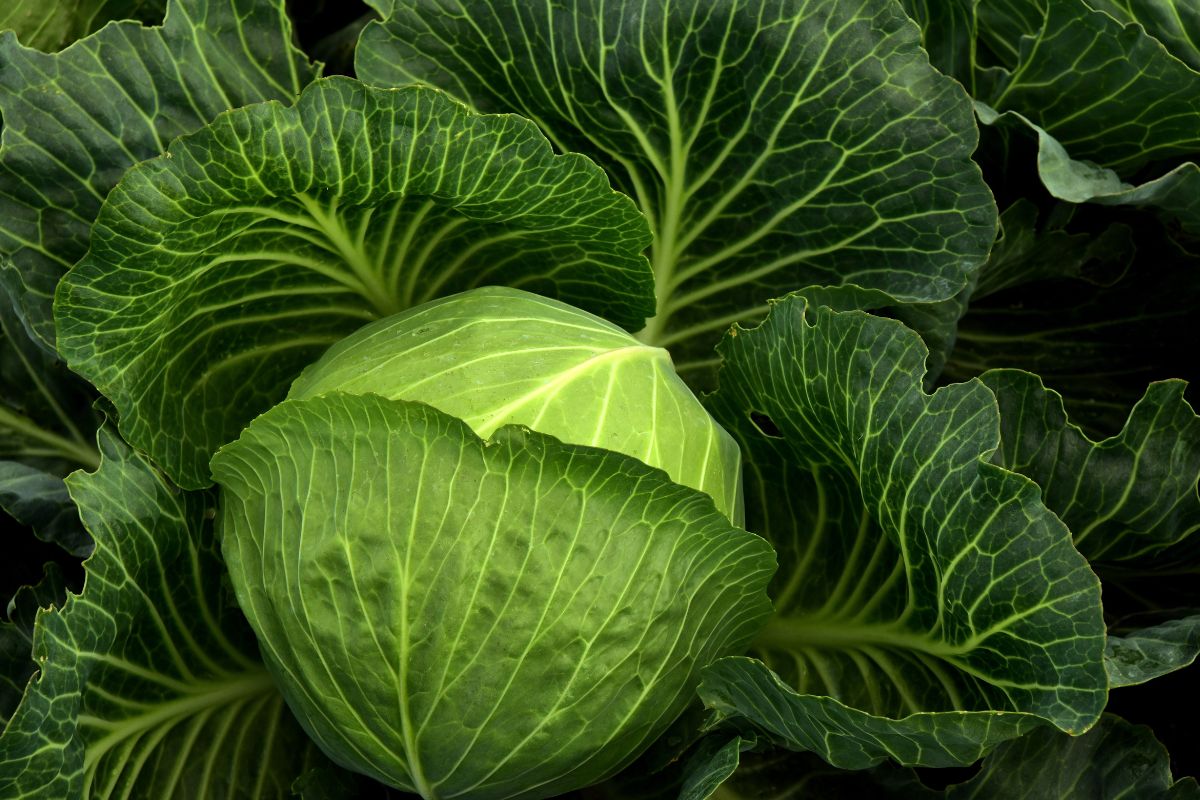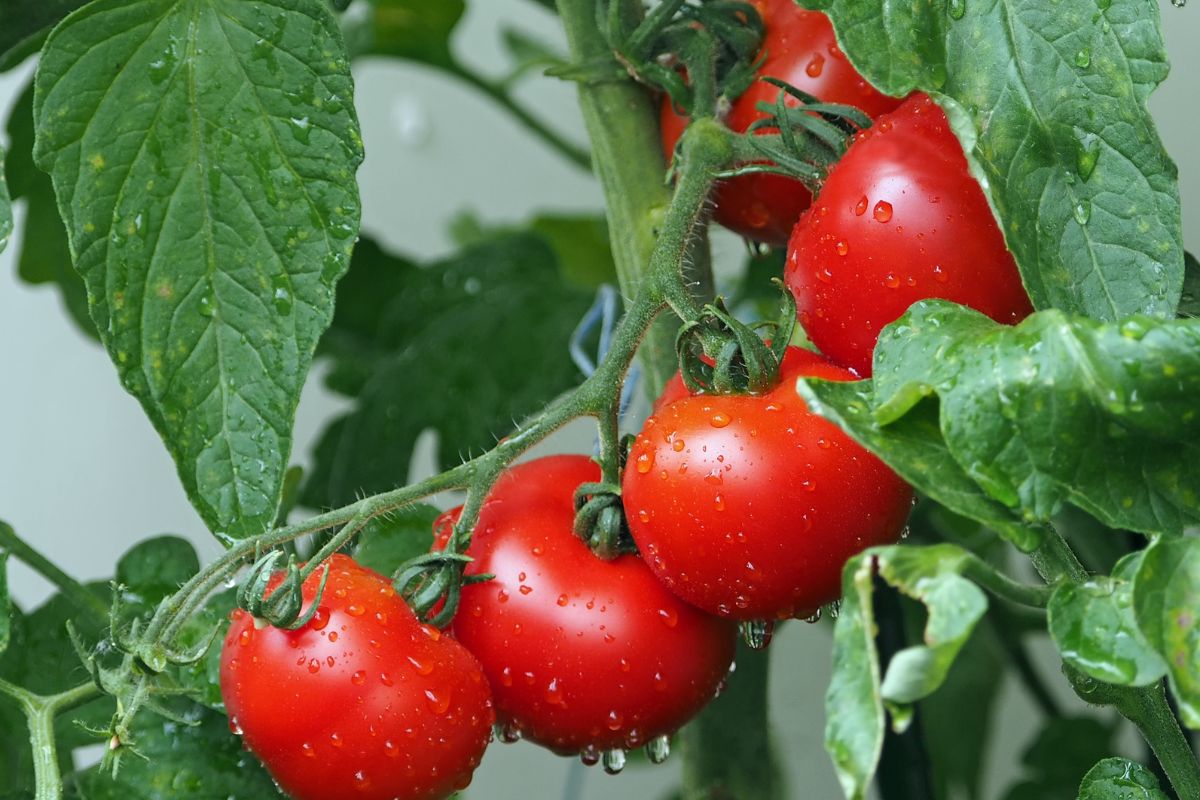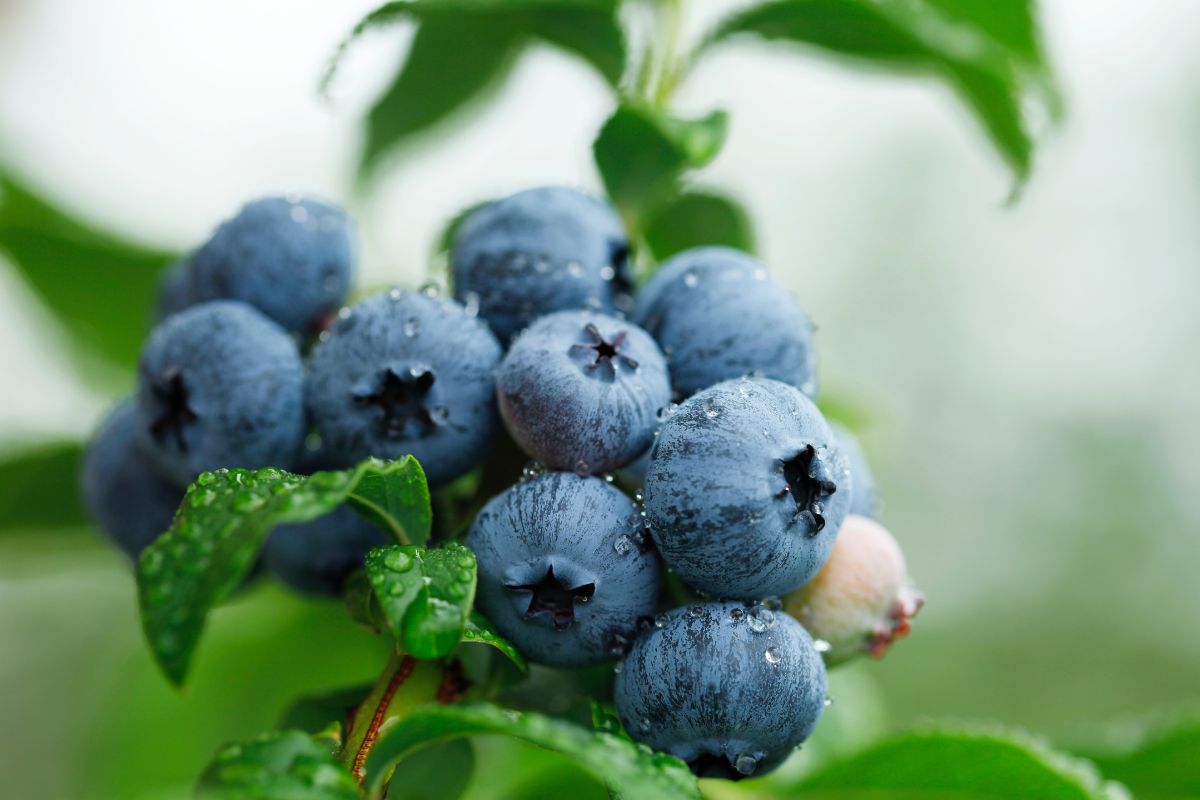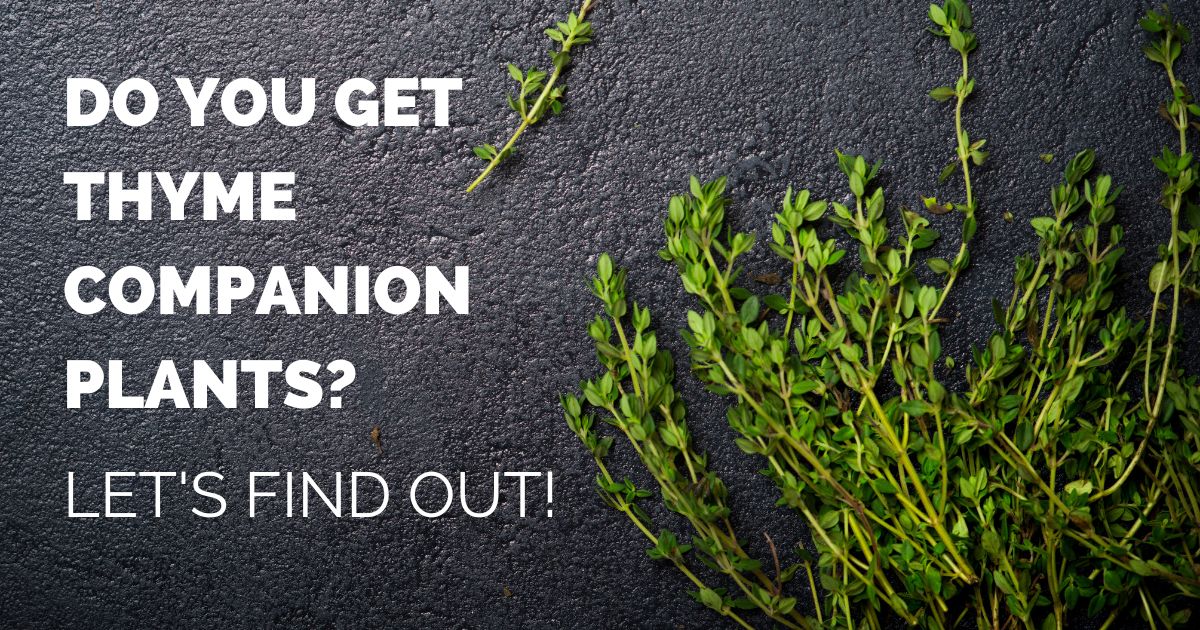Can Herbs be Planted Together?
The answer is yes! Why not get thyme companion plants? Companion planting is a gardening approach that involves combining different crops to promote growth and quality. Thyme is a great and useful plant to have in your yard.
Because this delicious herb is a perennial, you can explore for some herbs to grow together with it. This, in return, will help in improving your garden.
The Different Types of Thyme Plants
If basil varieties are the herb world’s giants, thyme is their tiny equivalent. Their lovely little leaves provide beauty to the herb garden, container gardens, and mixed perennial beds. While all thyme plants are edible, you can use some in cooking and others as beautiful ground coverings. There are so many types of thyme plants. Let’s look at some of them:
Lemon Thyme
Lemon thyme resembles English thyme but has a lovely lemon-fresh fragrance and taste. Add it to marinades for fish or poultry, smoothies, and any recipe that calls for lemon juice, zest, or flavor.
And do you know what else? It tolerates pruning so well that you may successfully incorporate it into your classic knot garden design. Get some lemon thyme companion plants, and you will be good to go.
Woolly Thyme
This little ground cover thyme is ideal for use between pavers and stepping stones. The growth is creeping and spreading, and the leaves are drab and dense. Woolly thyme rarely blossoms, so if you dislike flower-loving bees, this is the thyme for you.
Creeping Pink Thyme
Creeping Pink, another ground cover thyme, thrives when you allow it to spread out rather than camp out between pavers. It features plumper leaves and a plethora of tiny pink blooms. It is far more heat and drought-tolerant than other types. If you love it, you can get creeping thyme companion plants to go with it.
Italian Oregano Thyme
Italian Oregano, taller culinary thyme, has a zesty flavor that matches well with Italian cuisine. Its pink flowers will last approximately a month before you chop it back to stimulate additional delicious growth for your next dinner gathering.
Caraway Thyme
This is one of those thymes you may use as a ground cover and a culinary herb. Its rich flavor and aroma can be used as a real caraway alternative in any dish, while its modest 4″ height and bright pink blossoms work hard to fill in open places in the garden swiftly.
Pennsylvania Dutch Tea Thyme
Pennsylvania Dutch Tea, as the name implies, is ideal for tea brewing (fresh or dried), and you can use it for any recipe that calls for English thyme. It has dark, oval leaves and pink blooms and reaches a height of about 1 inch.
Silver Thyme
Silver thyme has bright, variegated green leaves with a white edge. It has pink flowers, and you can use it in any recipe that calls for thyme but don’t forget to add it to your container garden for interesting texture and color play.
Juniper Thyme
Juniper, culinary thyme, has stiffer silvery leaves that resemble juniper needles. It also has a lot of pink flowers that look great in alpine rock gardens.
Lavender Thyme
The growth habit of Lavender thyme is not completely flat, making it a better candidate for rock gardens and fillers rather than a steppable ground cover. What about the scent? You’re familiar with a heavenly lavender scent that delights when you get close. Pink flowers add to the allure.
Elfin Thyme
Elfin is one of the smallest and slowest growing thymes, with tiny green leaves and lavender flowers. Elfin, like Woolly thyme, thrives when allowed to fill in between stepping stones.
The Benefits of Growing Thyme
Growing thyme alongside other plants and herbs can provide numerous benefits. Here are some of the best reasons to try herb companion planting:
- Pest-deterrent: Thyme can act as a deterrent to various garden pest insects. According to anecdotal evidence, thyme repels tomato hornworms, cabbage worms, whiteflies, corn earworms, and other pests.
- Fill gaps well: This perennial herb grows in a small space. For the most part, it remains compact and slow-growing.
- Returns year after year: It’s always nice to have a head start on the growing season the following year. Thyme will be happy and healthy in the spring.
- Drought-Tolerant: Thyme will usually forgive you if you forget to water it. This drought-tolerant herb is ideal for neglected areas of your garden.
- May improve flavor: Planting thyme companion plants may enhance the flavor of some crops.
- Aromatic: Thyme smells wonderful! This reason alone should persuade you to grow thyme.
The Best Thyme Companion Plants
So, can herbs be planted together with other plants? Yes! For instance, there are several good thyme companion plants. These plants promote thyme growth and overall survival in the garden.
The plants include vegetables like tomatoes, eggplant, and flowers like roses. Let’s take a closer look at the majority of these beneficial plants you can easily grow with thyme.
Vegetables
Cabbage
Thyme pairs well with most cabbage family members. This includes cauliflower, broccoli, and kale. Thyme repels pests that irritate them, such as cabbage worms, aphids, slugs, cabbage moths, cabbage loopers, and flea beetles.

Eggplant
Eggplant is an excellent plant for thyme companion planting. Thyme acts as a natural pest repellent, keeping garden moths away from eggplants. Artificial pesticides are unnecessary in your eggplant garden with thyme.
Potatoes
Thyme and potatoes go well together in the kitchen and the garden. Planting potatoes as a thyme companion plant is worthwhile because you will almost certainly have a pest-free harvest. Thymes attract parasitic wasps that feed on potato beetles and help control them. If you’re looking for one plant that can improve the flavor of your potatoes, plant it with thyme.
Shallots
Shallots are an excellent thyme companion plant. To put it another way, shallots resemble onions but are not the same thing. Thyme enhances the flavor of shallots, which helps keep worms away from them.
Tomatoes
Thyme effectively keeps pests like hornworms and whiteflies away from tomatoes. This makes them healthier and more edible. Thyme also enhances the flavor of tomatoes. I’m sure these advantages are exactly what your tomato garden requires.

Fruits
Blueberries
Thyme is a good herb to grow near berries. If you have a blueberry garden, planting them with thyme will benefit you greatly. Thyme attracts honey bees, which aid in the pollination of these berries.

Strawberries
You will enhance weed control by planting thyme and strawberries together. Thymes planted between strawberries help to keep weeds at bay in your garden. Thyme also discourages worms and other marauders from destroying strawberries. They also keep the soil moist by providing ground cover.
Flowers
Lavender
Lavender is a popular companion plant for many Mediterranean herbs. This is because their growth requirements are similar. Thyme is no exception, and it pairs well with lavender.

Roses
Roses are lovely flowers that you can plant with thyme because the rose plant benefits more from it. Even though keeping aphids and blackflies away from roses is difficult, they can assist you. Roses are one of the best flowers to grow in your garden, aside from being a good companion plant.
Salad Burnet
Salad Burnet is another excellent companion plant for thyme. It is a perennial plant used for aesthetic and medicinal purposes. They create a pleasant fragrance in your garden when combined with thyme. Salad Burnet has astringent properties as well as edible leaves. It thrives in this combination with thyme.
Which Plants Not to Plant with Thyme
Even if you’re looking for companion herbs or plants to reap the benefits of companion planting, there are some crops you should avoid if you’re planting thyme. These plants compete for space and soil nutrients or are toxic and kill your crop.
This will result in a low harvest as well as poor crop performance. Whatever research you conduct, do not plant these plants near thyme:
- Chives
- Basil
- Cilantro
In various ways, the plants mentioned above are extremely harmful to thyme. Some of these plants attract insects and diseases that can harm your thyme. Don’t plant these crops with thyme if you want a bountiful harvest.
Considerations to Take Before Deciding on a Suitable Companion Plant
Space
Nobody likes crowded spaces, but inexperienced gardeners frequently transplant or seed plants too close together. It is critical to keep companion plants from invading your crop’s personal space as they grow.
However, this can be difficult to determine when planting. Some beneficial flowers, such as nasturtiums, borage, and African marigolds, start the season small but quickly outgrow the crops they’re supposed to help.
Competition for Water
Water holding capacity and irrigation may be an issue in your garden, depending on the soil type. More vigorous and deeply rooted plants can “steal” water from your vegetables when water is scarce. This can also occur if you plant certain plants too close to a crop.
Because carrots, tomatoes, squash, peppers, and potatoes have deep taproots and root hairs, shallow-rooted crops have a harder time retaining water. When selecting herbs to plant with other crops, ensure that deep-rooted vegetables or herbs do not steal moisture from shallow-rooted crops such as spinach, corn, lettuce, radishes, or onions.
Soil Requirements
When planting two species in the same location, changing the soil composition between a few square feet is difficult. Brassicas (broccoli, kale, cauliflower, cabbage, and so on) prefer well-drained, loamy, slightly alkaline soil.
Potatoes prefer sandy, slightly acidic soil. If you plant these crops next to each other, one of them might be unhappy due to differences in pH or soil texture.
Reasons to Plant Thyme Companion Plants
Companion plants grow near one another and help one another grow. These plants improve air quality, reduce plant stress, increase biodiversity, and attract beneficial insects that thrive as thyme grows. There are numerous varieties of companion plants, so choosing the right one for your garden is critical.
- Tomatoes: Tomatoes are wonderful thyme companion plants. They can aid in pest control and provide nectar for bees, which pollinate thyme plants. They also have some of the same growing requirements, so plant thyme if you have tomatoes growing in the vicinity.
- Lavender: Are you wondering what herbs can grow together? Try lavender and thyme. Lavender is a sweet, herbal plant that is a popular companion plant for thyme. The two plants can repel pests by working together.
Lavender improves the aroma of thyme in the garden or around the home. Lavender repels deer, which is useful if you grow thyme for culinary purposes. Lavender also has a fragrant oil that can help with garden fragrance.
- Rosemary: Rosemary is also one of the herbs to plant together with thyme. It has leathery leaves and blooms in spring with clusters of small white flowers. Rosemary is an excellent thyme companion plant because it masks the odor of the thyme while providing its sweet scent. Furthermore, rosemary improves air quality and deters pests.
- Cabbage: Cabbage is a cool-season vegetable that people grow primarily for its edible flowers and leaves. Cabbage leaves are an excellent companion for thyme because they repel pests, deer, rabbits, and other animals.
For those who want to grow their vegetables, a cabbage family plant, such as cabbages or brussels sprouts, is a good choice. These plants are simple to grow and don’t take up much space.
- Mint: As a companion plant to thyme, some people enjoy the scent of mint. Mint repels pests and can help thyme-scented plants retain their freshness. Mint is also drought tolerant and adaptable to various soil types.
Can Thyme Be Grown Indoors?
Yes! You can grow thyme indoors, but keep in mind that it requires plenty of sunlight and well-drained soil to thrive. Thyme, like most herbs, needs direct sunlight to thrive. Growing plants outside require up to 10 hours of direct sunlight per day.
When growing a herb garden indoors, thyme will require as much bright, direct light as possible. Low light conditions will cause your plant to grow leggy stems that will not look or taste right. When it comes to thyme, remember that brighter is better.
Parting Thoughts
Thyme is an excellent herb to grow in your garden. It not only enhances the flavor of various dishes in your kitchen but also the flavor of its companion plants. It also keeps various types of pests away from them. Growing them adds fragrance to your garden and provides you with healthy and tasty harvests.
To increase your chances of a great harvest, use companion planting techniques and learn which plants work best with thyme. Now that you know planting herbs together with other plants is possible, go ahead and try. Happy gardening!
